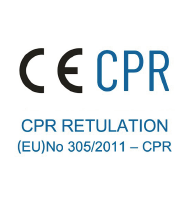|
CPR/Fire-safety cable
CPR Introduction
1. What is Construction Products Regulation (CPR)?
The latest fire protection findings are put into practice in modern new buildings. Fire protection legislation has also evolved over the past few years. However, it is not economically feasible to adapt every building to the current standard. In the event of a fire, visitors to the building often have very little time to escape the fire. Often, the greatest danger is not the flames themselves, but the formation of smoke and toxic gases that are produced when plastics are burned. These can cause irreversible damage to the lungs in no time at all.
In order to curb this risk, construction materials are tested and classified for their fire behaviour. One of the most important classifications is the CPR classification. The CPR is the European legislation that includes all types of products used in the building industry e.g. doors, windows, cement, plasterboard etc. Anything that is fixed into the fabric of the building is within the scope and must comply.

CPR establishes the basic requirements and essential harmonised characteristics that all products designed to be permanently installed in construction works must satisfy within the EU. Due to its legal nature, all relevant bodies such as cable manufacturers, distributors and resellers must comply with. CPR Regulation defines as construction product all those products designed to be permanently incorporated into construction works. Power, telecommunications, data and control cables, being part of the fixed installation in building, are included. Cables designed for connecting appliances or for internal wiring of equipment or electrical appliances, and all those cables that are not used as cables for construction are excluded.
The Construction Productions Regulation (CPR) is the building materials directive of the European CE marking. CPR covers all building products, including cables, classified by its reaction to fire behavior. The EU published Regulation 2016/364 in March 2016, which sets out fire ratings and corresponding test methods for all types of construction materials, including electrical cables. Also according to European Commission Notice 2015/C 378/03, EN 50575 has officially become the standard for reaction to fire requirements for wire and cable for construction in July 2016 and the standard will be officially implemented from 1 July 2017. As of 1st July 2017, it became obligatory for cables, having an intended use for permanent installation in domestic, commercial and industrial premises and other civil engineering works anywhere in the European Union to comply with the Construction Products Regulation (CPR). It applies to power, communications and fibre optic cables irrespective of manufacturing locations. The cable products manufactured and sold after this date will need to comply with the standard EN 50575, which classifies wire and cable fire ratings according to their behavior of heat of combustion, heat release & smoke production, vertical flame propagation, smoke density and acidity & acid gas content.








